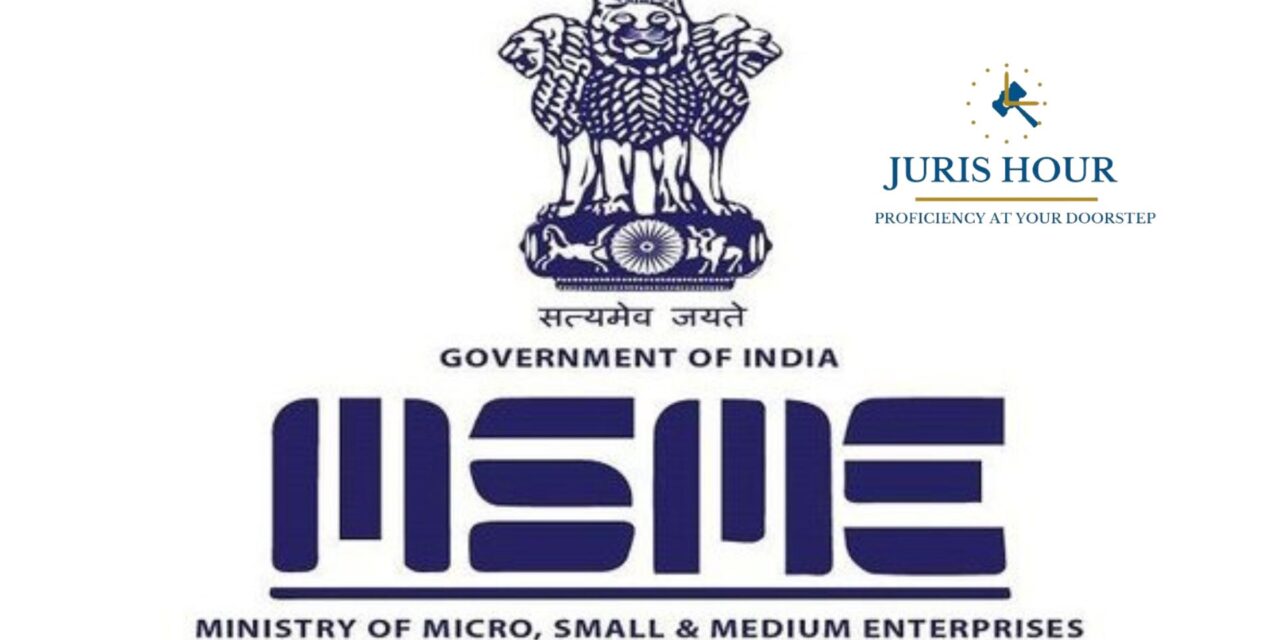This Article is written by Khushi. J. Prajapati who has completed her graduation from Somaiya University, Mumbai.
ABSTRACT
MSME’s Micro Small and Medium Enterprises has important bearing on GDP as well as employment in India. The insolvency and bankruptcy landscape in India was comprehensively overhauled by the Insolvency and Bankruptcy Code (IBC) introduced in the year 2016. This article seeks to unravel the effects of the IBC on MSMEs, highlighting a mix of positives and negatives that have been faced by these businesses under the ushered regime.
INTRODUCTION
Micro, small and medium enterprises constitute an essential element for country’s economy growth through job creation to large population percentage and significant export contribution. However, insolvency remains paramount owing to difficulties faced in meeting financial obligations posed by economic variables such as prices that are volatile. The Insolvency and Bankruptcy Code was enacted to enable quicker resolution of insolvency, accountability for the process, and better ease of business. It is important to understand how the IBC laws have affected SMEs in general with specific reference to certain clauses therein.
Key Provisions Of the IBC On MSME’s
- Simplified Resolution Process – The IBC offers an easier way for MSMEs to tackle insolvency processes. It is more flexible in terms of requirements and timelines, helping smaller companies change their mind easily with the least effort involved.
- Pre – Packaged Insolvency Resolution Process[PIRP] – Intended particularly for MSEMs, the PIRP makes possible a faster, and more effective resolution process whereby the debtor maintains management control whilst designing a resolution plan
alongside creditors. - Threshold for Initiating Insolvency – The increase of the threshold amount has provided some relief for Micro, Small and Medium Enterprises (MSMEs) by discarding frivolous insolvencies.
Positive Impact of IBC on MSME’s
- Improved access to credit – To creditors confidence is increased by the IBC leading to more access of credits by the MSMEs. With the resolution process from IBC being unambiguous and well-timed it decreases the risks for moneylenders hence motivating them to give out loans to MSMEs.
- Faster Resolutions – The time-barred resolution process under IBC assures that financially distressed MSME’s can be re-organised or determined rapidly, with less erosion in value and job losses contained.
- Enhanced Recovery Rates – Creditors have enjoyed better payment rates thanks to the introduction of the IBC which has inadvertently affected MSMEs as they become more appealing to financiers and investors.
- Reduction in NPAs – Effective resolution of distressed assets in accordance with the IBC has helped decrease NPAs and make the banking sector healthier and more supportive of MSMEs.
Challenges faced by MSME’s under the IBC - High Costs – Simplified processes withstanding, the costs incurring in the insolvency procedures can be unaffordable to many MSMEs to discourage them from embracing any formal insolvency solutions.
- Lack of awareness and expertise – A majority of MSMEs don’t understand how to manage an insolvent business because they are unaware of IBC provisions hence they hire expensive professionals for help.
- Stigma of Insolvency – Small and Medium Enterprises (MSMEs) might find it hard to lure investors and clients even after being cleared of bankruptcy due to the stigma that is related to defaulting on debt.
- Operational Challenges – For small firms known as Micro- and Small-Sized Enterprises (MSMEs), insolvency proceedings can have substantial operational impacts by interfering with their daily activities and damaging their contacts with clients and producers.
SUGGESTIONS
To harness the potential of the Insolvency and Bankruptcy Code (IBC) in bolstering the economy through helping micro, small and medium enterprises (MSMEs), we need to undertake many actions. It is important to note that some MSMEs may find the cost of taking part in insolvency proceedings very high. To achieve this, one must think about giving people financial aid or making the payment system simpler. Second, it is vital to sensitize people about the IBC and its laws.
Capacity-building initiatives should also be put in place to train MSME owners and managers on how to handle insolvency situations effectively. In addition, one way of doing this is through availing affordable professional service providers as well as resources while also working towards eliminating the shame attached to bankruptcy. We should help developing the abilities of
these people in order to enable them understand and handle bankruptcy insolvency properly. Moreover, a step towards this can be found in offering less expensive specialized service providers and resources thereby abolishing the social stigma that comes with insolvency.
CONCLUSION
The implementation of the Insolvency and Bankruptcy Code has led to major alterations in the insolvency regime of India, offering an organized and time-based method for resolving disputes favoring MSMEs. The benefit of
IBC on MSMEs is positive despite the challenges, however, there are still some issues that remain unaddressed. This imperfect regime notwithstanding; it has increased credit accessibility among other issues. For this reason efforts should be made directed at tackling these challenges so as to make it work better along with this piece of legislation enhancing its efficiency whereas that would eventually result into its enhancement hence leading us closer towards more benefits for the MSME affected thereby helping in their growth and development.
FAQs
- What is IBC?
The Insolvency and Bankruptcy Code (IBC) is a legal framework in India that consolidates and amends laws on corporate persons, partnership firms and individual reorganization and insolvency resolution boundly. - What is the meaning and definition of MSME?
The latest definition of Micro Small & Medium Enterprises [MSMEs] in India as amended by Government of India on June 1 2020 is based on investment in plant and machinery or equipment and annual turnover.
● Micro Enterprises
Investment : Up to ₹1crore
Turnover : Up to ₹ 5 crore
● Small Enterprises
Investment : Up to ₹ 10 crores
Turnover : Up to ₹ 50 crores
● Medium Enterprises
Investment : Up to ₹ 50 crores
Turnover : Up to ₹ 250 crores - What is the Pre-Packaged Insolvency Resolution Process (PIRP)?
PIRP is an internal dispute resolution system under the IBC targeting specifically MSMEs which ensures a faster and more efficient resolution process even as control over the administration remains with the debtor. - Are there any government schemes or support mechanisms for MSMEs under
the IBC?
In order to maintain economic stability, governments have implemented schemes such as micro-credits support program, as well as other initiatives such as emergency credit line guarantee scheme (ECLGS) for providing additional funds when they are needed most. - Can MSMEs continue operations during the insolvency process under the
IBC?
Yes, insolvency procedures allow MSMEs to remain operational. There is a moratorium provided for under the IBC that ensures that these businesses are not pursued legally thus they now can concentrate on making changes.









